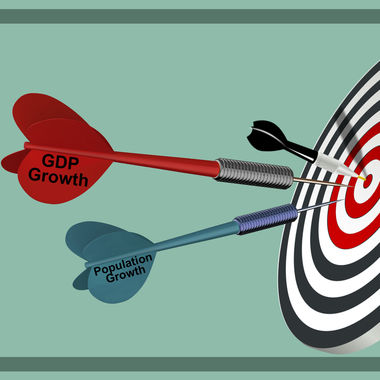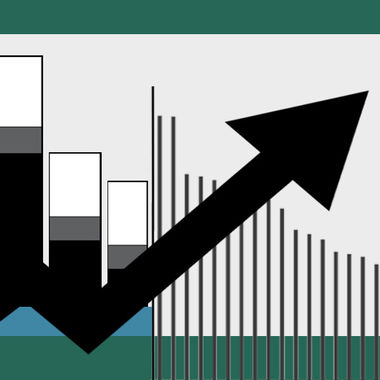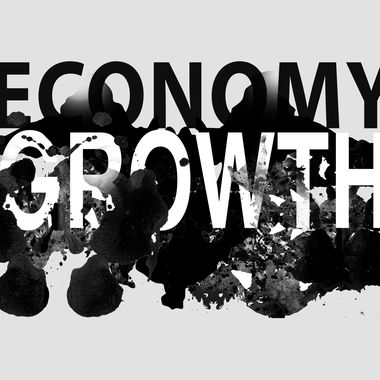Thu Mar 05 2020 · 7 min read
Venture Capital, Interest Rates and National Savings - What’s the Connection?

By Samson Avetian

Armenia’s transition towards a more innovative, technology-intensive and productivity-oriented economy is well underway. At its core, innovation and its successful implementation in public and private markets can be distilled into a function of the availability of qualified labor and financial resources to support groundbreaking new ideas and ventures. My previous article discussed the factors in creating a labor pool that is competitive on an international level. In this piece, we turn to the financing side of the equation, taking a macroeconomic perspective, while also discussing more practical matters such as financial system funding channels and investment vehicle considerations.
Savings as a Determinant of the “Price of Money” and Investment
It is common knowledge that the prevailing market interest rate acts as a hurdle for justifying new, for-profit enterprises. In simple terms, any new investment project needs to be able to generate higher returns than the capital required could generate just by sitting in a low-risk term deposit at the bank. Especially given the risks involved in conducting enterprise in Armenia, a high interest rate will clearly limit the number of projects that will be financed.
While these economic basics are rather obvious, the general domestic discourse has paid much less attention to the fact that national savings rates are the ultimate driver of domestic interest rate formation. This is one of the key economic concepts that has unfortunately been underemphasized. Yet, this relation has major implications, especially for small trade-dependent economies like Armenia.
Any income can either be consumed or saved. The proportion that is allocated to each will have its ramifications on the money markets. Higher savings incentives and preferences will amplify the banking sector deposit base. This surplus of liquidity will push interest rates lower, unlocking more investment projects for the medium-to-long term.
This surplus liquidity can, of course, find itself flowing outwards, toward international financial markets. While that may, at face value, be perceived negatively, this dynamic increases the demand for foreign currency, puts downward pressure on the domestic exchange rate and ends up boosting the domestic export-oriented sector.
To summarize, a higher savings rate by domestic economic actors, specifically households but also the public sector, will unlock more investment, whether domestic or export-oriented. Such investment will, in due course, create employment, enable productivity-enhancing equipment, build out essential infrastructure and widen the tax base.
It’s About the (Medium-to-) Long Run, Again
The main difficulty with higher savings rates is the fact that there will be few economic stakeholders that would applaud such a policy-led, mandatory increase in savings propensity. Any tax increase will lower the ability of domestic households to consume and result in diminished sales for domestic businesses – at least in the short-term.
While much of the cut in domestic consumption will lower the import bill, thus improving the trade deficit, the headlines that such a policy direction is likely to attract will focus on short-term hardship.
Ultimately, such a reorientation from consumption toward investment and an export-led economic structure is a tradeoff between short run belt-tightening and long run economic sustainability and productivity. This path has been taken by countless countries. This article will not dwell on statistical exposés and case discussions.
The history of modern Armenia has in fact seen encouraging examples where this tradeoff has been made for the benefit of long run productivity and investment generation. One is the recent pension reform. In effect, it was a mechanism that introduced a mandatory savings increase. It resulted in both increasing domestic savings pools and keeping the exchange rate from further appreciation. Other steps of a more prosaic nature, but also important for instilling a savings culture, were Yerevan municipality’s gifts of “piggy banks” to elementary school students and the recent discourse on the customary opulence of Armenian New Year dinner tables. As such, these positive precedents, large or small, lend credence to more long term-oriented decisions being taken in the future.
Innovation and Venture Finance is Especially Sensitive to Cost of Capital
Innovation and venture finance, in its nature, is an especially risky enterprise. As lower interest rates unlock more investment projects, at some point, funds will start flowing into innovation-based projects that have an exceedingly uncertain probability of success.
Here, a lower cost of capital is less likely to be compared with risk-adjusted returns for certain projects, as opposed to “pushing” the ample liquidity into investments that promise outlier, exponential returns. Say what you will about ample liquidity in financial markets, but there is a decent argument to be made that, on several occasions, including the end of the 1990s and 2010s specifically, this has been followed by an acceleration in financing software/Internet and AI/energy vehicle innovations respectively. Only a couple of years earlier, these projects were referred to half-jokingly. In hindsight, however, we can see that these waves of finance did result in substantial innovation that we experience in our daily lives.
Loss-making enterprise, such as the initial stages of any new venture, is not readily financed in an environment where opportunity costs are high. Would Tesla’s almost decade-long run of negative profits and cash flows be financed in an environment of limited liquidity? It would have undoubtedly made it more difficult. But today, the company’s “computers on wheels” are not only striking terror into the hearts of traditional car manufacturers, but the company itself has a higher price tag as a firm than almost all of its peers. Of course, such disruptive innovations are not solely based on the availability of cheap finance, but it has surely accelerated them!
Financial Market Sophistication and Regulatory Consideration
Another key facilitator of innovation finance is the availability of a sophisticated financial system. Time and again, one hears the argument that the innovation hotspot Silicon Valley has outperformed other advanced economy peers exactly because its venture finance industry has been around for decades longer than those in continental Europe. The availability of relevant financial vehicles and channels like venture capital (VC) funds and angel investor networks provide the necessary synchronization between investors’ risk & return preferences, portfolio diversification and duration matching.
Another important consideration is that investment vehicles such as VCs act only as intermediaries of capital between investors and entrepreneurs. The investors in this case are predominantly of an institutional nature, i.e. pension funds, endowments, insurance companies and banks. Only in about 10% of cases does the capital come from high net worth individuals.
With that being the case, the supporting regulatory frameworks become key to incentivizing these financial institutions to prudently allocate some of their funds into venture finance type investments. In the opposite case, when bank or pension fund regulations are too conservative and restrictive, it becomes perfectly clear that few individual investors can afford to become overexposed to risky investments of this nature. The U.S., for example, has again been ahead of most others on this matter for decades. As recently as the beginning of 2020, local regulators loosened regulations for banks to invest in venture finance vehicles. In an era where competition is based on innovation and technology advancement, such a policy choice is not difficult to grasp.
A progressive and proactive regulatory approach should not only be limited to finance but also include a supportive legal environment. But these important considerations are outside the scope of this article, as is the fact that the society’s overall willingness and ability to adopt new technology is critical to innovating, testing and investing in groundbreaking new products & services.
Developing the Domestic Innovation Finance Industry
In summary, given Armenia’s current context, a few important points need to be mentioned.
Firstly, Armenia’s savings rate has been very low for decades, both in absolute terms and compared to international peers. Moreover, while high net worth individuals, based both in Armenia and the Diaspora, from which most of today’s funds are sourced, are important given their domain and market knowledge, ultimately this capital base is too shallow to meaningfully shift the dial.
Furthermore, it is one thing is to be able to finance “seed”-stage start-ups. It is another matter to have funds available to finance later stage “growth” firms in need of accelerated expansion, hiring and scaling up. These companies either run the risk of being stranded or being left behind their competition in the absence of access to sufficiently deep liquidity.
As described above, international experience does clearly point in this direction. Accordingly, taking a more proactive, prudent and well-structured regulatory approach will indeed be key to unlocking a deeper savings pool as well as a professionally-managed institutional capital base.
Secondly, the matter of international venture finance participation needs to be considered. While invaluable, it is questionable to what degree such inflows are realistic in the medium term, especially if there is little participation and risk-sharing from the domestic venture finance side. At present, the foreign capital available is mostly related to official structures, beneficial as they are, as opposed to private sector-led venture investment initiatives.
A third question is whether public sector-led, direct financing can address the matters mentioned. Some nations do have financing vehicles for similar purposes. Although these can be a critical source of finance for some projects, they tend to be of a non-profit character and have a strategic security orientation. Also, they usually form a small part of the total national investment pool to avoid skewing market pricing and selection mechanisms.
In conclusion, Armenia’s advancement in the tech and innovation space is only in its infancy. In order to take the next step and shift gears, domestic financial markets need to be well-aligned and sophisticated enough to provide the best possible support and take Armenian entrepreneurship and innovation to the next level.
Samson Avetian is VP and co-founder of the Angel Investor Club of Armenia.
He is also the author of: “Armenia’s Economy the Next 25 Years. 3 Ways to Restructure the Ugly, the Bad and the Beautiful”.
by the same author
Breaking Down Pashinyan’s 2050 Economic Targets
By Samson Avetian
In August 2019, Prime Minister Nikol Pashinyan set ambitious targets to be achieved by 2050, including a population of 5 million, 1.5 million new jobs, eliminating poverty, and a GDP 15 times greater than today’s figures. Samson Avetyan focuses specifically on the GDP growth target and examines the likelihood of hitting such a goal by 2050.
Aligning Communication, Policy and Finance: Where Are We on the Road to a Knowledge Economy?
By Samson Avetian
State budget allocations for education, science and research domains are particularly important, writes Samson Avetian. As labor force quality is one of the main drivers of productivity growth, this variable is critical for Armenia to flourish.
Has Armenia’s Growth Outlook Improved?
By Samson Avetian
Samson Avetian looks at a number of variables that can impact Armenia’s economic growth outlook and writes that despite the challenges, the Velvet Revolution has catalyzed and facilitated meaningful improvement and thus raised longer run GDP growth projections.
Armenia’s Investment Potential is Substantial, But Internal Discourse Needs to Be Carefully Managed
By Samson Avetian
There is potential for an increase in investment activity in Armenia. Expectations of entrepreneurs need to be carefully managed in order to see this acceleration happen already as early as 2019, writes Samson Avetian.







EVN Report welcomes comments that contribute to a healthy discussion and spur an informed debate. All comments will be moderated, thereby any post that includes hate speech, profanity or personal attacks will not be published.